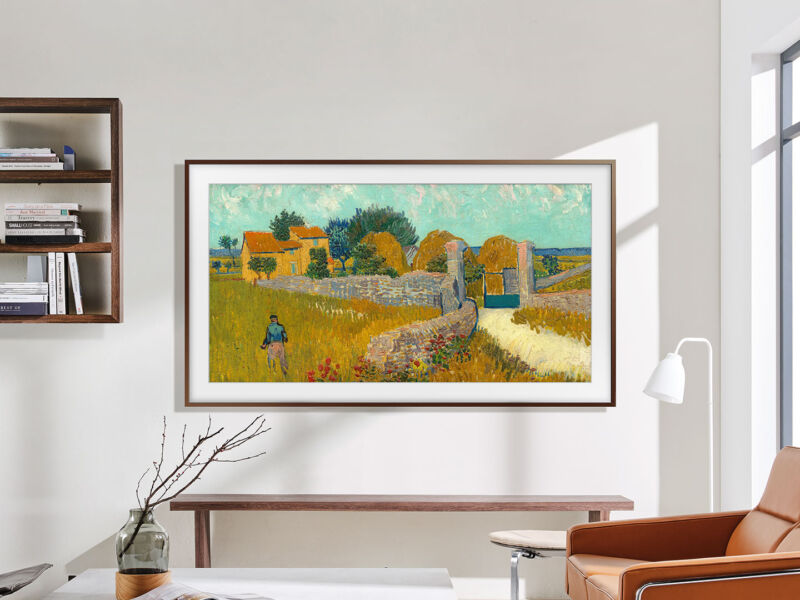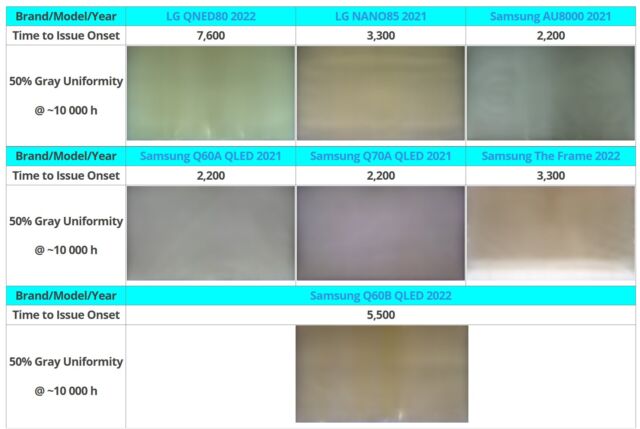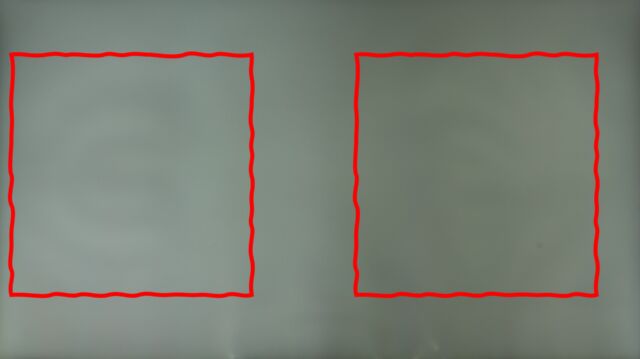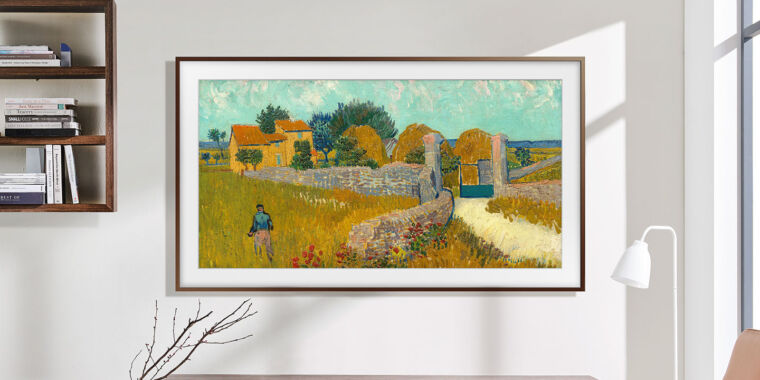
Samsung
Thin LCD-LED TVs are attractive because they’re easy to find space for and they’re aesthetically pleasing. To stay slim, most thin TVs, such as Samsung’s The Frame pictured above, use edge-lit backlights. But aside from the picture quality limitations of these designs, new testing from RTINGs suggests there are inherent flaws in edge-lit TV designs that could hurt their durability.
The review site RTINGs has conducted extreme testing on dozens of TVs and a handful of monitors that are supposed to simulate years of use. So far, RTINGs has racked up 10,000 hours of testing, which the company says equates to about six years of use. In a YouTube video this week, a representative from the publication's research team said that testing over the past few months has revealed a “clear, but disturbing trend” of LCD TVs with edge-lit backlights being “inherently susceptible to significant durability issues.” She added that edge-lit TVs “fail at a higher rate than other LCD TV designs,” whether those with full array local dimming (FALD) or direct-lit (or global dimming) backlights.
For the torture test, RTINGs tested 11 edge-lit TVs and reported that seven of them had “noticeable” uniformity issues. Of those seven, two are LG TVs and five are Samsung TVs.

That's not a huge number, but the RTING representative noted that “64 percent of one type of TV have problems, compared to 20 percent of both” tested FALD and direct-lit models.
According to the RTING spokesperson:
The results of our research conclude that edge-lit TVs are more susceptible to failures than other LED designs, such as full array local dimming or direct-lit designs. These problems are brand independent.
Three main issues are causing the uniformity problems, which have worsened on all but one of the seven affected edge-lit TVs, RTINGs said: warped reflector plates, cracked light guide plates and burned-out LEDs. These problems reportedly surface after extended use of the units with the brightness cranked to max.

When asked for comment, a Samsung representative told RTINGs that it has been “reliably” using edge-lit technology in products for more than 15 years and that the company has “continuously improved the optical components and thermal management of edge-lit models by subjecting them to more than 20 long-term reliability tests, including high-temperature tests.” LG told the publication that it had seen no difference in defect rates between edge-lit and FALD or direct-lit LCD TVs.
Hotspots
As is often the case with screen distortions, the biggest factor here is heat dissipation.
Because edge-lit displays concentrate heat into a few (typically one to four) areas along the edge of the display, the heat is more concentrated than the heat generated by FALD, or direct-lit, backlights. For example, LG’s QNED90 2022 TV has 180 LEDs along the bottom edge compared to the Sony X90L’s 160 LEDs spread across the entire back. While brighter TVs tend to run hotter, the dimmer LG TV exhibited hot spots that the Sony did not, with its LEDs measuring as much as 123° C (253.4° F) with the TV set to max brightness (RTINGs did not specify how long it took for the LEDs to reach this temperature, or the temperature of the Sony TV’s LEDs).
This level of heat can warp the TVs' reflector plates, which aren't pinned down like they are on FALD and direct-lit LCD TVs. “That means there's nothing holding that plate tight and secure in the TV. So it warps,” the RTINGs representative explained. According to the publication, every TV opened with edge-lit backlighting had a reflector plate that showed signs of warping.
Edge-lit TVs also use polymer light guide plates, which other types of LCD TVs do not have, to diffuse light. These plates are also affected by the high temperatures of LEDs, despite the TVs having heat sinks, as only plastic spacers separate the plates from the diodes. Combined with the stress “caused by the rapid heating and cooling of the TV,” RTINGs said it is seeing light guide plates crack, causing visible streaks of light to shoot from the edge(s) where the backlight is.
Extreme examples of light guide plate damage include the 2022 LG QNED80, which RTINGs says has over 25 cracks in it, and the Samsung AU800, which had its plastic spacers melt, causing the light guide plate to slide and fuse with the strip of LEDs to the south of it.
Such high temperatures can also cause the LEDs in edge-lit backlights to burn out, which can result in a bluish tint to the TV picture.

